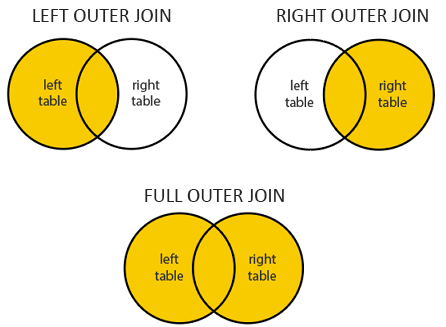Left Join Vs Outer Join

Understanding the differences between left join and outer join is crucial in database management and querying. Both types of joins are used to combine data from two or more tables based on a related column between them, but they serve distinct purposes and yield different results.
Introduction to Joins
In relational databases, a join is an operation that allows you to combine rows from two or more tables based on a related column between them. The result is a new table that contains columns from both tables. There are several types of joins, including inner join, left join, right join, and full outer join. Each type of join returns different results based on how rows are matched between the tables.
Left Join
A left join, also known as a left outer join, returns all the rows from the left table and the matched rows from the right table. If there is no match, the result will contain null values for the right table. The left join is denoted by the keyword LEFT JOIN or LEFT OUTER JOIN in SQL.
The basic syntax for a left join is as follows:
SELECT column1, column2
FROM table1
LEFT JOIN table2
ON table1.common_column = table2.common_column;
Outer Join
An outer join is a join that returns all rows from both tables. There are two types of outer joins: left outer join and right outer join. A full outer join returns all rows when there is a match in either the left or right table. If there is no match, the result will contain null values for the columns from the other table.
The syntax for a full outer join varies slightly depending on the database system you’re using. In standard SQL, it’s denoted by the keyword FULL OUTER JOIN:
SELECT column1, column2
FROM table1
FULL OUTER JOIN table2
ON table1.common_column = table2.common_column;
Not all database systems support the FULL OUTER JOIN syntax directly. For example, in MySQL, you might achieve a similar result by using a combination of left and right joins with the UNION operator.
Key Differences
- Left Join: Returns all rows from the left table and the matched rows from the right table. If there’s no match, the result will contain null values for the right table.
- Outer Join (specifically Full Outer Join): Returns all rows from both tables. If there’s no match, the result will contain null values for the columns from the other table.
Example Use Case
Consider two tables: Customers and Orders.
Customerstable:- CustomerID (unique identifier)
- CustomerName
Orderstable:- OrderID
- CustomerID (foreignKey referencing Customers.CustomerID)
- OrderDate
To find all customers and their corresponding orders, if any, you would use a left join:
SELECT Customers.*, Orders.*
FROM Customers
LEFT JOIN Orders
ON Customers.CustomerID = Orders.CustomerID;
This query will return all customers and their orders. If a customer does not have any orders, the columns from the Orders table will be null for that customer.
To find all customers with their orders and all orders with their customers, regardless of whether there is a match, you would use a full outer join:
SELECT Customers.*, Orders.*
FROM Customers
FULL OUTER JOIN Orders
ON Customers.CustomerID = Orders.CustomerID;
This query will return all customers and all orders, with null values where there are no matches.
Practical Applications
- Data Analysis: Joins are crucial for combining data from multiple tables to perform comprehensive data analysis.
- Business Intelligence: Outer joins can help in identifying all records from different datasets, useful in business intelligence for analyzing sales, customer behavior, etc.
- Database Administration: Understanding how to use joins efficiently is key to optimize database queries and improve performance.
Conclusion
In conclusion, while both left join and outer join are used to combine data from multiple tables, they serve different purposes. A left join is used to retrieve all records from one table and the matched records from another, whereas an outer join (particularly a full outer join) is used to retrieve all records from both tables, regardless of whether there are matches. Understanding the differences and applications of these joins is essential for effective database querying and management.
FAQs
What is the primary difference between a left join and a full outer join?
+A left join returns all records from the left table and the matched records from the right table, with null values where there are no matches. A full outer join, on the other hand, returns all records from both tables, with null values where there are no matches in either table.
When would you use a left join versus an outer join?
+You would use a left join when you want to retrieve all records from one table and the corresponding records from another table, if they exist. Use a full outer join when you need to retrieve all records from both tables, ensuring that no data is lost due to non-matching records.
Can you achieve a full outer join without using the FULL OUTER JOIN syntax in SQL?
+Yes, in databases that do not natively support the FULL OUTER JOIN syntax, you can achieve a similar result by combining the results of a left join and a right join with the UNION operator, ensuring to eliminate duplicate rows if any.
By mastering the use of left joins, outer joins, and other types of joins, you can effectively manage and analyze complex data sets, leading to better decision-making and more insightful data analysis.



